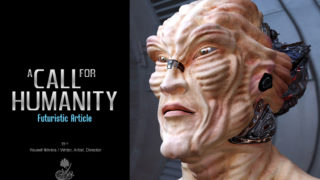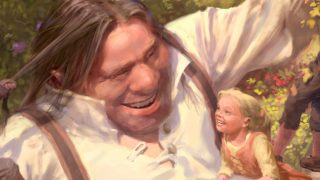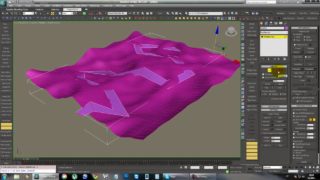
Making of Neokathmandu
I started this matte painting by creating a new document in Adobe Photoshop with a blank canvas of 3540 x 6000 pixels at 300dpi.
|
1. I started this matte painting by creating a new document in Adobe Photoshop with a blank canvas of 3540 x 6000 pixels at 300dpi. This gave me a pretty large area to work in, with lots of room for little details. I started off by drawing in the rough outlines of my landscape. At this stage I have already started using layers, separating my background, foreground and middleground. It is a good habit to name your layers for easy reference because in a painting such as this you could end up using literally hundreds of layers. Once I was happy with the general outlines, I started on a rough colour sketch (using Photoshop’s standard brushes with a soft point) to help figure out the colour scheme and composition and to give the client an idea of how things were progressing. In this case I received some very helpful and positive feedback from the client with some minor changes made to the rough. |
 |
 |
|
2. This is what the colour rough looked like once completed. As you can see the sky and mountains are already pretty well developed. At this stage the design of the city is still pretty crude as I’m still thinking about ideas for the style and look of the buildings. Once everyone is happy with the colour sketch, I will start looking for suitable photographic references to use in the painting. |
 |
|
3. If I cannot take the photographs myself I will usually purchase suitable ones from online photographic stock libraries such as istockphoto.com. Above is the original photographic stock that I used for this work. |
 |
|
4. The next step is to start adding a bit more detail to the painting and trying to achieve a photorealistic look. I generally start with the element which is the furthest away (usually the sky). After finishing the sky, I started detailing the distant mountains, cloning in the rock textures from |
 |
|
5. The brief described a futuristic looking city with elements of old skool Asian architecture mixed in. It further describes the city as being built into the mountainside, almost wrapping around the cliffs. At first I looked at modern skyscrapers as a possible source of inspiration and reference. While they certainly looked modern, they didn’t look all that futuristic and their lines were too clean for my liking. I eventually came across a photograph of an oil refinery, that looked, suitably futuristic and hi-tech. With lots of cloning, copying and good ol’ 1pixel brushwork I started building the mountain city. |
 |
|
6. Once all the detailed work is done, I will start throwing on dozens of adjustment layers to see how I can improve things such as contrast, colour, levels and the overall atmosphere of the painting. Colourising the scene with a universal layer blend mode sets the final mood and helps to bring the different elements of the matte painting closer together. |
|

 About the Artist
About the Artist






